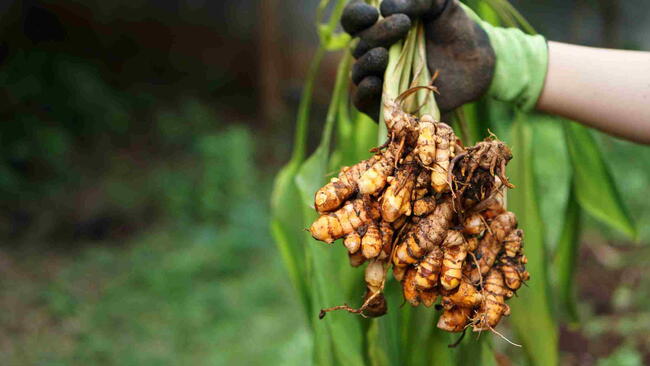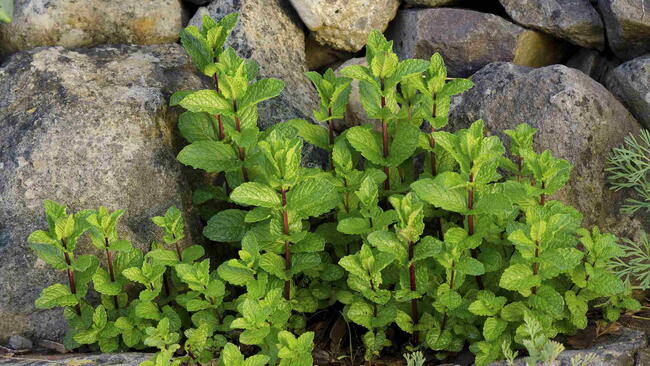Discover tansy, a tough-as-nails herb that bugs off pests and rolls out the welcome mat for pollinators. With golden button blooms and feathery green foliage, tansy adds old-world charm to veggie patches, borders, and cottage gardens alike. In this guide, we’ll dig into everything you need to know about growing tansy—how to plant it, care for it, and use its garden superpowers to your advantage.
Bonus? Deer tend to steer clear. Thanks to its strong scent and bitter taste, tansy is considered deer-resistant—a handy trait for gardens in browsing zones.
About Tansy
Tansy (Tanacetum vulgare)—also known as golden buttons, garden tansy, and bitter buttons—is a perennial herb in the daisy family (Asteraceae), related to asters, sunflowers, and chrysanthemums. It typically grows 1 to 5 feet tall and blooms from midsummer to early fall with clusters of fragrant, button-like yellow flowers. The upright stems are lined with fern-like, aromatic leaves that give tansy its distinctive look.
A historic favorite, tansy was likely brought to North America by the Pilgrims in 1620. Over the centuries, it’s been used in teas, old-time remedies, and even meat preservation. These days, it’s mostly grown for its ornamental value—and its pest-fighting reputation.
Is Tansy Invasive?
Before planting, it’s important to know that tansy can be invasive. It spreads aggressively by seed and underground rhizomes, and even small root fragments can regrow into new plants.
Because of this, tansy is listed as a noxious or prohibited weed in parts of the Pacific Northwest, Midwest, and Northeast. Be sure to check your local regulations before planting.
That said, gardeners who want to grow tansy can take precautions to keep it well-mannered:
- Plant in containers or raised beds to contain the roots.
- Deadhead flowers before they go to seed.
- Monitor spreading rhizomes and remove any wandering shoots.
Prefer to Play It Safe?
If you love the look or function of tansy but want to avoid its invasive habits, try these better-behaved alternatives:
- Yarrow (Achillea millefolium) – A native wildflower that’s hardy, pollinator-friendly, and ferny in texture.
- Golden Marguerite (Anthemis tinctoria) – Similar yellow blooms, with a more controlled growth habit.
- Fennel (Foeniculum vulgare) – Feathery foliage, tall structure, and useful in the kitchen.
Is Tansy Poisonous?
Yes—tansy contains toxic compounds that can be harmful to humans, pets, and grazing animals. While historically used in medicine, it’s not considered safe to ingest today. Avoid planting near children’s play areas or where livestock or pets roam. Like many herbs, tansy is best enjoyed for its looks and fragrance—not for snacking.
Why Gardeners Still Grow It: Tansy’s Pest-Repelling Powers
Despite its downsides, tansy remains popular with organic gardeners for one big reason: it’s a natural pest deterrent. The plant’s essential oils are rich in compounds like thujone, camphor, and 1,8-cineole, which have shown insect-repellent properties in lab studies.
Here are a few notable examples:
- Colorado Potato Beetle (Leptinotarsa decemlineata): Tansy essential oil has been shown to significantly deter feeding behavior in these beetles. Treated leaves were less likely to be eaten, suggesting potential as a natural pesticide. Source: PubMed, 2020
- Green Peach Aphid (Myzus persicae): Allelochemicals from tansy have strong repellent effects against this aphid species, making it a useful companion for aphid-prone plants. Source: ScienceDirect
- Fall Armyworm (Spodoptera frugiperda): When 2% tansy oil was added to artificial diets in lab tests, 73% of larvae died within 48 hours—pointing to its potential as a natural insecticide. Source: USDA CRIS Database
While more research is needed in field settings, these results suggest tansy may help protect nearby crops—especially potatoes, brassicas, and tomatoes—when used as a companion plant.
Today, tansy is primarily grown as a companion plant to deter pests from nearby crops and add a touch of historic flair to modern gardens. Its essential oils are rich in compounds like thujone, camphor, and 1,8-cineole, which have demonstrated insect-repellent properties in scientific studies.











Comments